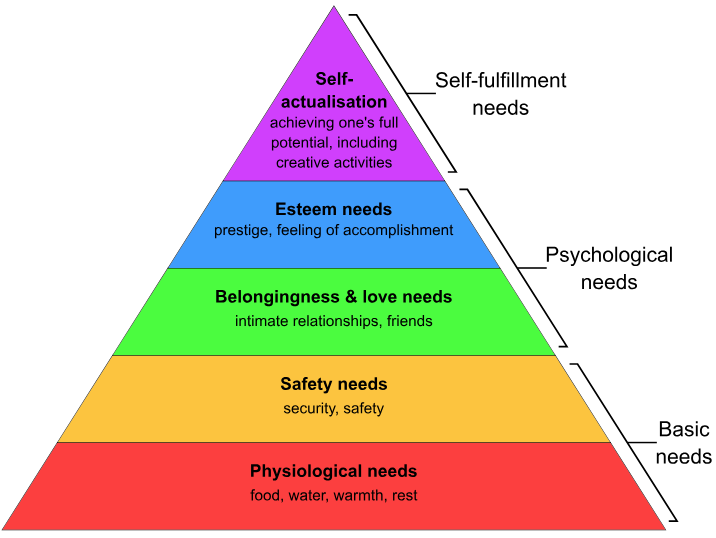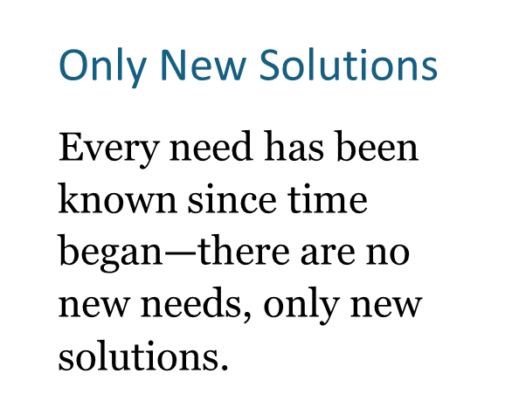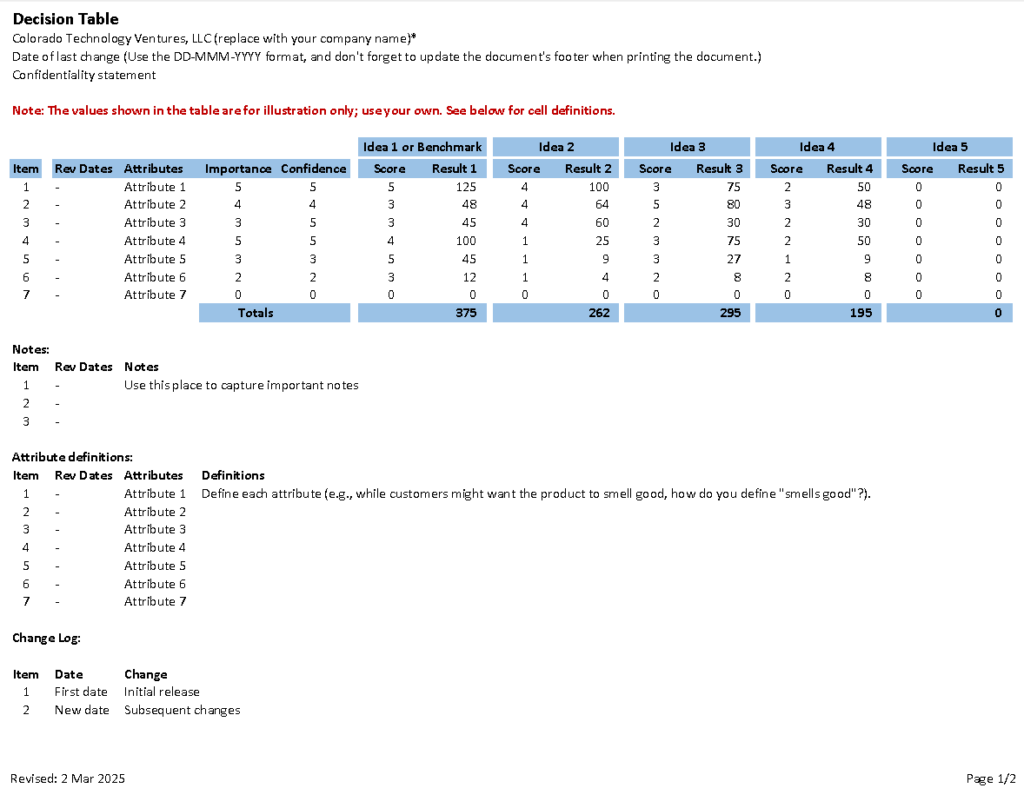Wishing they had asked the three key marketing questions, “Marketing,” the engineer quipped, “is what we should have done before spending millions making products no one wants.”
Joking aside, there are three key marketing questions all founders, their teams, and investors should answer before spending significantly on any venture.
But first, a few definitions:
Customer: A customer is a person who buys your product. As a seller of commercial cleaning services, your customer is not a bank because a “bank” is not a person—a bank is a company often housed in a brick building with a clock above the front door (time is money). Instead, your customer is a person who is duly authorized by the bank’s leadership to contract with you to purchase your cleaning services. Customers are people.
Market: A market is where customers, with similar resources, values, and wants, and sellers selling similar or complementary solutions, buy and sell products. Grocery stores design their stores and stock related products to attract and sell to carefully defined customers (Whole Foods and Trader Joe’s compete in the same upscale grocery markets; Whole Foods and Dollar General compete in different markets).
Marketing: Marketing encompasses all the activities, processes, skills, tactics, tools, and experiences one uses to grow one’s market. Marketing is more than advertising; it includes, for example, market research, product development, pricing, distribution, promotion, and sales.
Product: A product is a good or a service sold, rented, etc., to a customer for the customer’s or user’s use or consumption; furthermore, a good is something tangible, something you can conceivably resell (e.g., you can sell your used car); however, a service is only consumed—it can be neither taken with you nor resold (servers serve food, doctors treat patients).
User: A user is a person or animal that uses your product. While a customer might also be a user, generally, customers buy and users use. For example, a dog owner buys a toy for their dog’s enjoyment; the dog owner is the customer, and the dog enjoys (uses) the toy.
Previously, I wrote about needs and wants where I claimed we have no new needs, only new wants. “I will always need food, and right now, I want pizza.” Because people have always somehow addressed their needs, all products have competitors. Therefore, our job as product developers is to commercialize new and better solutions—products that customers perceive as being better (solves a problem, gets a job done, addresses a want, satisfies a desire, etc.) than do their other choices. The nearby image of the blacksmith conjures old methods that have long been replaced by modern, high-volume, less expensive methods of making high quality metal goods.
The Three Key Marketing Questions
- What customer needs and wants are you addressing?
- Do your customers really, really want your solution?
- Can and will your customers pay your prices again and again?
What customer needs and wants are you addressing?
The better you and your teams understand your customers’ needs and wants, the more you will likely succeed. Doing so requires you to dive deeply into customers’ and users’ personas (personalities, psyches, egos, etc.) and understand how to satisfy their wants better.
Drill down. Keep asking questions. Ask five whys. This is not a list of your product features; it’s understanding why your customers, from their perspectives, will prefer your solution.
- Understanding patrons’ needs for food and creativeness, restaurateurs offer new dishes. Restaurateurs who innovated successfully grow their markets.
- Understanding customers’ needs for safety and productivity, crane manufacturers designed cranes with smaller footprints. These new cranes operate in tighter spaces, damage less property, and injure fewer people. These crane innovators have grown their markets.
- Understanding little league softball players’ needs for performance and esteem, bat manufacturers introduced brightly colored aluminum bats (Watch out, Alison’s using her new, brightly colored bat; she means business). These bat manufacturers grew their markets.
Will your customers really, really want your solution?
Who most wants to purchase or use your product? Think again. Which market segment so desperately wants your product that customers or users will change their habits, knowing they’ll probably pay more and experience some stress as they learn to use yours?
Your solution will likely require new customers or users to change their behaviors. For example, a potential customer who previously bought store-brand bananas might consider buying your organic ones. Even though he believes yours spoil faster, what is so compelling about your offer that he must choose yours? What will compel him to change his behavior? You have to figure it out; if you can’t, stop.
In a previous post, I wrote about the thirty percent rule. Before changing purchasing behaviors, customers typically want a new solution to be, in the aggregate, about thirty percent better than their next best choice. Looking at the customer’s entire experience, from pre-purchase to final disposal, is your overall mix of benefits thirty percent better than your competitors’? Back to bananas, what combination of benefits will drive your customer to believe your organic banana is thirty percent better overall than his previously purchased store brand, net of the fact that yours spoils faster? Finally, don’t forget that your biggest competitor may be a customer’s apathy to change.
Are your customers able and willing to pay your prices again and again?
As always, to answer these questions well, you must think from your customers’ points of view. Put yourself in their shoes. Prove to yourself, your team, and your investors that your target customers can and will pay your prices and purchase your products repeatedly.
Startup salespeople, selling new, buggy, unproven, higher priced, but otherwise high-value solutions, are trained to prioritize customers who are both tolerant of risk and have the necessary budgets to try new solutions.
Customers make purchase decisions based on the entirety of their experience. How did they learn about you? Was their purchase experience pleasant? Were they satisfied with their use or consumption of your product (performance, reliability, and durability)? Did you support their service needs well? And once done, were they able to safely and legally dispose of your product? Customers make purchase decisions based on the totality of their knowledge. Whether you like it or not, their perception trumps your data.
- A former customer wore out a pair of your shoes and decided to buy new ones. In his opinion, was he pleased with your shoes? Were they comfortable? Were they durable? Was the price acceptable? Was his purchase hassle-free? Now, he looks at his new choices. Amidst changing fashions, are your shoes still attractive? Can he still afford your shoes, or did he learn to wait for one of your coupons? Finally, what does he think when he looks at your new competition?
- In large, big-dollar, multi-year projects, like building power plants, where few are built per year, one still asks the same questions. A client engineer enjoyed working on a previous project with your contracting firm’s team. Then she moved to a new company. Ask yourself the same question: will she champion your firm as her preferred contractor at her new company? Will she buy your services repeatedly, regardless of where she’s employed?
- Finally, sellers often want to sell to young customers, hoping to sell to them repeatedly over their long lives. For example, knowing young customers can rarely afford top-of-the-line cars, car manufacturers sell introductory cars to younger customers, believing that if they please these younger customers, they’ll buy many more of the manufacturer’s cars.
Recap: The Three Key Marketing Questions
- What customer needs and wants are you addressing?
- Who are your customers, and do they really, really want your solution?
- Are your customers able and willing to pay your prices again and again?
These questions are deep and challenging, and one must have the resources (time, money, skills, tools, and support) to answer them honestly and thoroughly. A test of a founder’s, a team’s, and an investor’s worth is how well they address these questions and support the necessary changes.
If you want help answering these or similar questions, please click contact. In any case, stay tuned, as I’ll tackle beachhead markets next week.
Colorado Technology Ventures coaches and mentors founders and their startups.
Back to Top
Contact
Home





